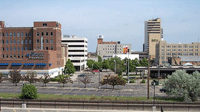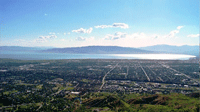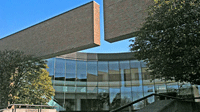Leading Locations for 2014 Resources
For this year’s Leading Locations study, Area Development analyzed economic and work force data for 379 metropolitan statistical areas (MSAs) — both for 2012–2013 and, in some categories, stretching as far back as 2008, the depths of the recession. The goal was to identify which cities across America are emerging as front-runners in this new era of economic development possibilities — and why.
The top MSAs in the list demonstrate that a variety of strong individual drivers, or a combination of many factors, can move a city’s attractiveness as a business site into the foreground. Chief among those drivers for 2014 are the renaissance in domestic manufacturing, the gusher of economic blessings flowing from the fracking revolution in U.S. oil and gas fields, and the spread of America’s high-technology dominance to sparkling new urban epicenters even as the birthplaces of this advantage retain their sheen.
But for most cities, the advantages of the moment aren’t enough alone to sustain long-term success as a site-location beacon. They also must respond effectively to the many factors that affect local and regional economic performance, as well as proactively create healthy business climates for the long run, and invest in that future The locations that best create and sustain such multilevel support not only are best at landing new companies but also excel at supporting local companies and helping them hone their competitiveness with rivals at home and abroad.
Included below, is an interactive table that will allow you to view the rankings of all 379 MSAs. The report includes an overall ranking that is based on 21 economic indicators. Area Development also created category rankings that are based on sub-groups of indicators from the 21 used for the overall results (refer to the methodology to learn more). Readers can use filters to easily segment MSAs by region, population size, and state, or use the search field to locate specific MSAs. The expanded version of the chart displays how each city ranks in every one of the 21 indicators used in the study.
Note: Area Development’s research desk compiled the statistics for this report. Locations were ranked according to the methodology explained herein. Location profiles/articles were researched and written by Dale D. Buss, Staff Editor.
The heart of Silicon Valley continues to drive not only the California economy but also the continuing U.S. lead in digital innovation, entrepreneurship, and growth. Its bellwether employers — including Facebook, Google, Yahoo, and hardware players such as Hewlett-Packard and Cisco — provide the attraction and energy to retain and nurture the world’s richest collection of high-tech talent.
They are fed by science and engineering graduates of some of America’s top tech schools, including the University of California-Berkeley, and financed by a 39 percent share of all venture-capital investments across the nation in 2013. Increasingly, immigration is a factor as well: There was a 52 percent increase in foreign immigration last year over 2012.
In Silicon Valley, patent registrations rose by 11 percent in 2012 over the year before, while jobs grew by more than 3 percent over the prior year; total population grew by 1.3 percent, and median household income began to increase last year after a four-year decline.
Increasingly, non-technology players are taking up residence in Silicon Valley as well, ranging from Ford to Nestle. They’re counting on the nation’s most proven crucible for innovation and top-flight digital-era talent to help their own businesses take the next great leap forward.
The San Francisco Bay area is the spiritual home of those who want to have a life as well as a job. One of the most vibrant, diverse, tolerant, exciting and sometimes outrageous cities in the world, San Francisco has relied on these attributes to create a robust economic engine that has been able to power through complications such as the city’s high cost of living.
Continued growth in San Francisco comes in a variety of ways. It’s a major tourism destination, of course, and it has an underappreciated role in global trade, with more than 75 international consulates and 22 foreign-trade offices. San Francisco is home to more than 1,890 technology firms, including digital standouts such as Lucasfilm and Sega of America. The Bay Area’s 41 colleges and universities provide the talent to feed their demands, and about 54 percent of adults have a college or graduate degree.
Key to the area’s continued growth is its continual development of new economic engines. Now more than 130 biotech companies are located in the city, many of them at Mission Bay, which has become a hub of this increasingly important vertical. The biotech and clean-tech enclave alone has birthed nearly 100 early-stage companies.
The mile-high economy of Colorado’s major metropolitan area is built on a number of advantages, including the transformation of its long-existent high-tech cluster by new companies, a historic connection to the newly booming oil and gas industry, a young and geographically loyal workforce, and the inherent advantages of being the only major business hub in the Mountain region. Model regional cooperation for economic development and the nation’s only all-new major metro airport in the last quarter century contribute as well.
And, no joke — while the economic benefits of Colorado’s marijuana legalization are only beginning, they’ll become an apparent contributor to growth in the Denver area over time. For now, Denver and its environs are coming out of the Great Recession with stronger job growth than originally thought. Last year, the state’s jobs grew by 3.5 percent, revised from an initial estimate of 2.6 percent. That reflected growth in every job sector in the state and continued into 2014.
Software is at the heart of this boom. Growing small tech companies, many in the heart of Denver, have collectively added enough jobs lately to offset some layoffs at large tech firms. Pharmaceuticals are chipping in as well, such as Broomfield’s Accera.
Mid-Size Cities (Population 160,000-600,000)
The fracking boom in North Dakota continues, bringing lots of jobs, people, and investment to the capital of the Bakken oil-shale formation, Fargo. And after several years of economic bounty — because it’s at the epicenter of the re-establishment of American domestic energy “security” — Fargo is attempting to turn this huge advantage into greater economic diversity and true long-term gain.
The fossil-fuel boom has made Fargo one of the best places in America to find a job and make money. Forbes ranked the area No. 2 in its best small places for business and careers last August, for instance. And Fargo placed No. 5 in the Milken Institute Best Performing Cities Index in 2014.
This economic vibrancy came on top of an infrastructure that already included world-class education and research and productive employees. And Fargo is younger than most outsiders assume: It was ranked in the top college towns and cities with populations below 250,000 in 2012–2013 by the American Institute for Economic Research.
In fact, there’s also a mini tech boom in and around Fargo that is in the midst of creating a predicted 8,000 jobs including 1,000 alone at Microsoft. All of this activity, in turn, is stimulating the traditional backbones of the Fargo economy, including manufacturing, agriculture, and services.
Provo and Orem share the eastern shore of Utah Lake and a lot more: explosive economic and job growth as tech employment burgeons and more employers — locally grown and from around the United States — take advantage of its large population of millennials, entrepreneurial atmosphere, and quality of life.
A recent report from the Milken Institute ranked Provo-Orem as No. 2 in its list of the Top 25 Best-Performing Large Cities for Business, basing its conclusion on growth in jobs, income, and technology output. That was up five spots from the previous ranking. Provo-Orem also ranked No. 2 in 2013 on the Forbes ranking of “Best Mid-size Cities for Jobs.” And last June, Forbes also listed Provo as No. 1 “Best Place for Business and Careers.”
The area has been topping so many charts lately because of the strong flow of new college graduates it is producing, especially from huge Brigham Young University, and because of a thriving tech sector. Local successes such as Novell, Nu Skin and Ancestry.com are expanding. Google’s selection of Provo-Orem as just the third city for installation of its new high-speed fiberoptic service will add more momentum to tech growth.
Sioux Falls has acquired a solid reputation as a breath of fresh air from the American prairie, a modern and complete urban center that still serves a large, rural region that has benefited lately from the strong U.S. agricultural economy and a bit from the fracking boom to the state’s north.
The city boasts low costs for doing business, a dependable and well-trained work force, and a minimum of red tape — things that companies are looking for. At the same time, Sioux Falls boasts a satisfying quality of life and is on the rise as a retirement haven. Forbes has recognized both aspects of the area’s character by ranking Sioux Falls No. 1 on its list of Best Small Places for Business and Careers for nine of the last 10 years.
Sioux Falls has proven a growth base for firms in the financial services, medical, and renewable-energy industries because of its collective expertise in manufacturing, research, and back-office operations, as well as its business-friendliness. About 80 percent of new jobs there are created by existing businesses. TCF Financial, Terex Bid-Well, Adams Thermal Systems, Integra Plastics, and Twin City Fan & Blower have all expanded their footprints in Sioux Falls recently, each citing a favorable tax climate.
Small Cities (Population < 160,000)
A perfect storm of economic growth has nourished Columbus, Ind., keeping the little industrial powerhouse atop Area Development small-cities rankings for the third year in a row. The city is benefiting from the boom in domestic production of auto engines and other components, longer looks from site locators because of Indiana’s new right-to-work law, and rising appreciation for what AARP called Columbus’s “under-the-radar charm.”
Columbus surged by 13 spots to rank No. 2 in the Milken Institute list of “Best-Performing Small Cities” in 2013, driven by the community’s top-10 finishes in job growth, wage growth and high-tech GDP growth.
The city has been thriving lately in large part because of the success of its biggest employer, Cummins, which keeps expanding its output of diesel engines for various sizes of trucks. In fact, Columbus has more mechanical engineers per worker than any other U.S. metro. It also hosts R&D centers for other major global auto suppliers, such as Faurecia. A Japan-based fastener manufacturer, Sunright, last year announced its third expansion in the Columbus area.
Columbus has genuine quality-of-life chops as well, ranking high for its retirement affordability, first-rate park system, innovative architecture, and location less than an hour from Indianapolis.
Midland is the definition of a boomtown. Originally sprung out of the West Texas oil patch decades ago, Midland has entered another era of strong growth thanks to the rebirth of the U.S. oil and gas industry via fracking and horizontal drilling. Now Midland is just trying to keep ahead of all aspects of its resulting growth.
The city posted among the top 10 percentage increases in Gross Metropolitan Product last year for the fourth year in a row. Between November 2009 and November 2013, the number of nonfarm jobs in the metro area increased by 25 percent versus just 5.5 percent for the nation as a whole. Its population burgeoned by 4.6 percent in just a year, also topping the country. Personal income per capita grew by 25 percent between 2009 and 2011 as the drilling boom drove other job growth as well.
The flip side for Midland, like neighboring Odessa, has been simply coping with the prodigious growth of the last few years. Average monthly asking-rent prices climbed from less than $600 before the boom hit in 2007 to $1,110 by mid-2013, according to Reis real-estate researchers. And rising home prices are squeezing would-be buyers out of the market.
Count Bismarck’s blessings from the appearance of thousands of new oil wells in North Dakota over the last decade. Only half the size of Fargo, N.D., the capital city also is absorbing the economic benefits of job and income growth brought by the fracking revolution.
The Gross Metropolitan Product of Bismarck grew by 8.5 percent in 2012, the seventh-largest rate of any city. As of last November, no metro area had a lower unemployment rate than Bismarck’s 2.4 percent. And while the pace of the oil boom has slowed a bit, it continues: IHS estimates that Bismarck’s GMP will increase by another 3.5 percent this year, leading all U.S. metro areas.
In May, the state launched “Find the Good Life in North Dakota,” a campaign to fill approximately 25,000 job openings for skilled workers. “We need a workforce that we can rely on into the future,” a state official said.
The retail and healthcare hub also ranked No. 4 on the most recent Forbes list of “Best Small Places for Business & Career,” which cited niceties such as arts and recreation opportunities in Bismarck, influenced by the presence of state government.













